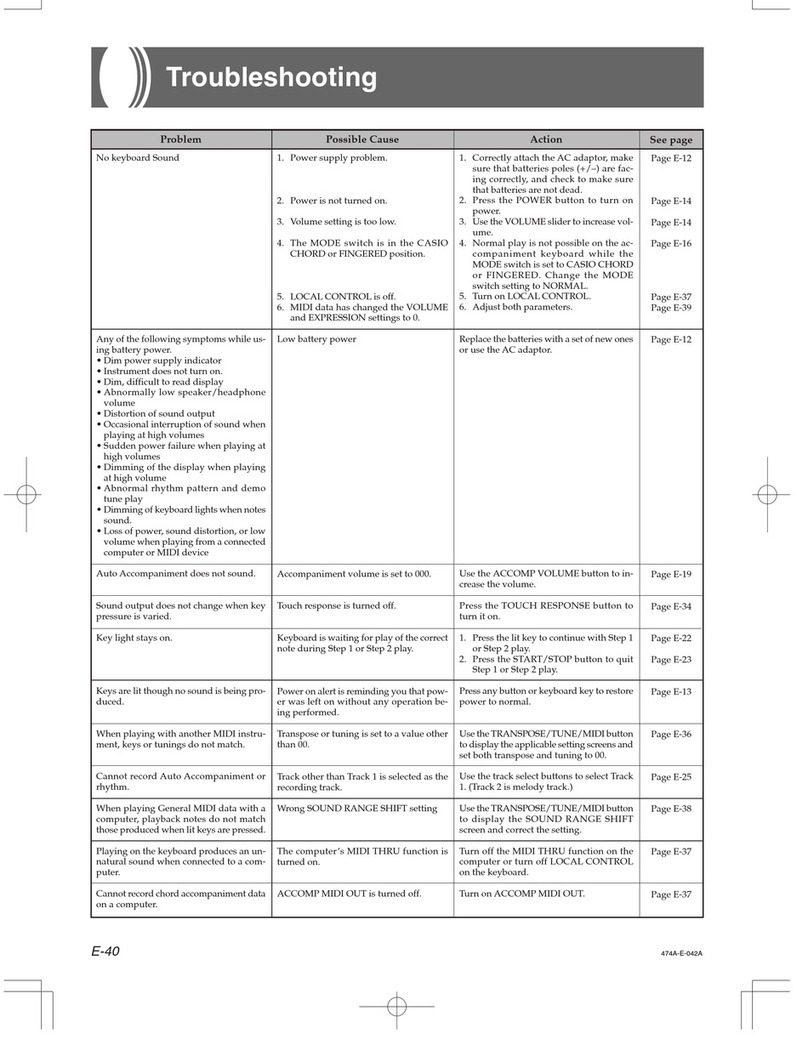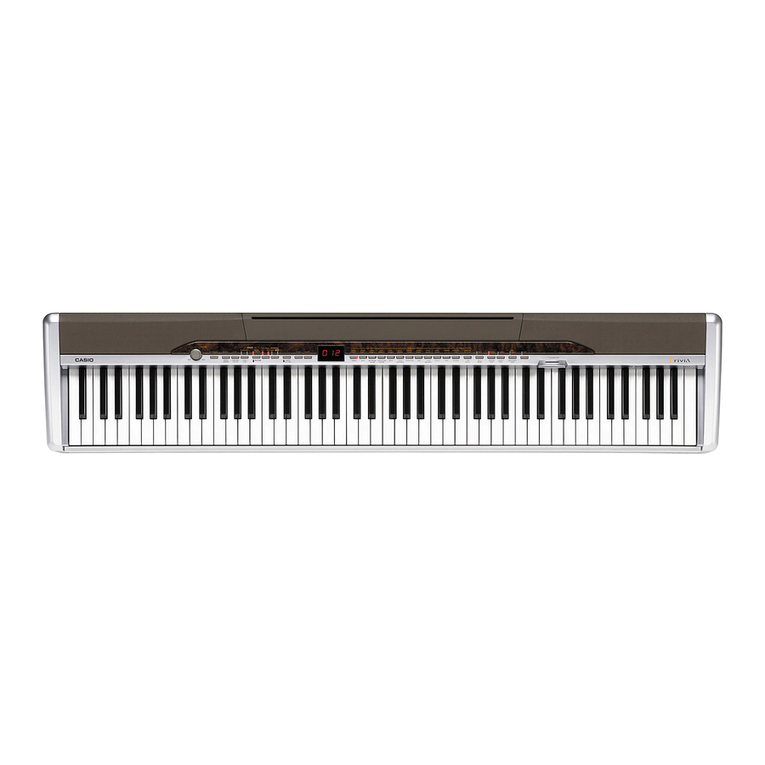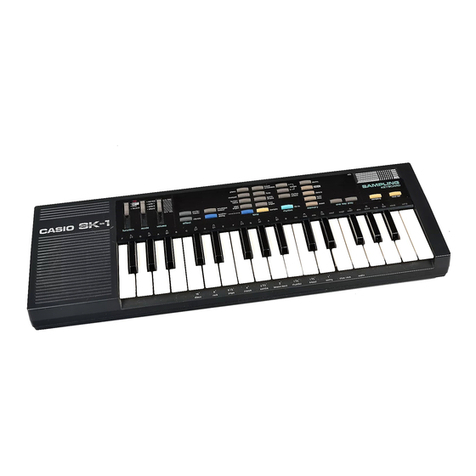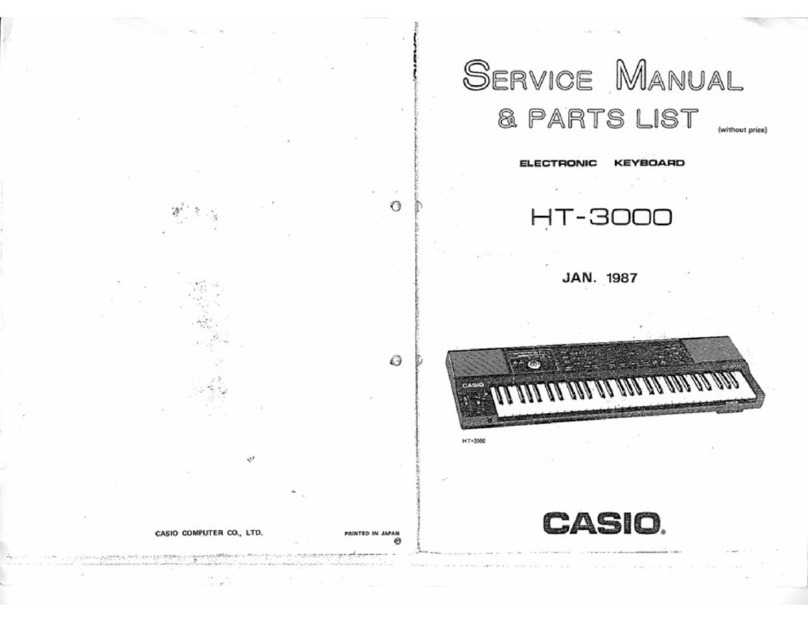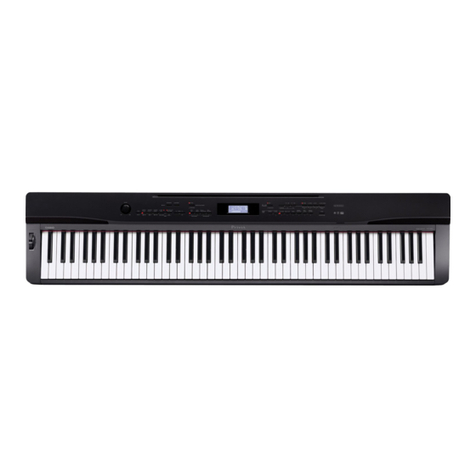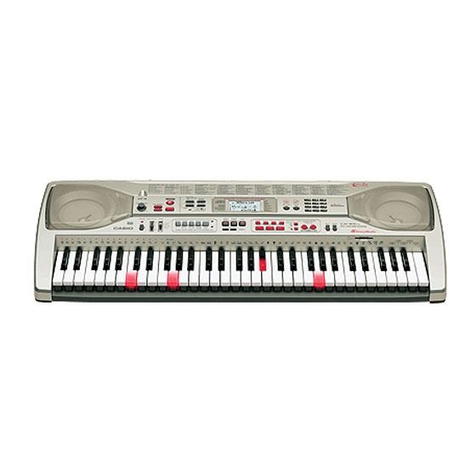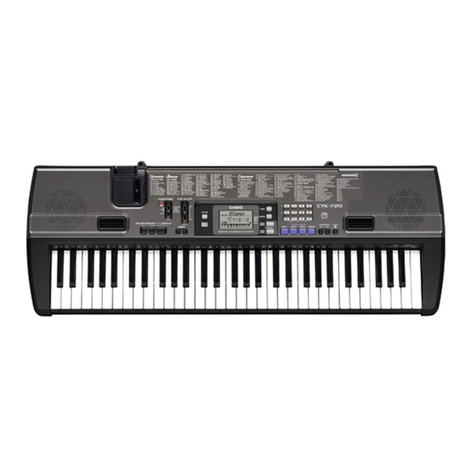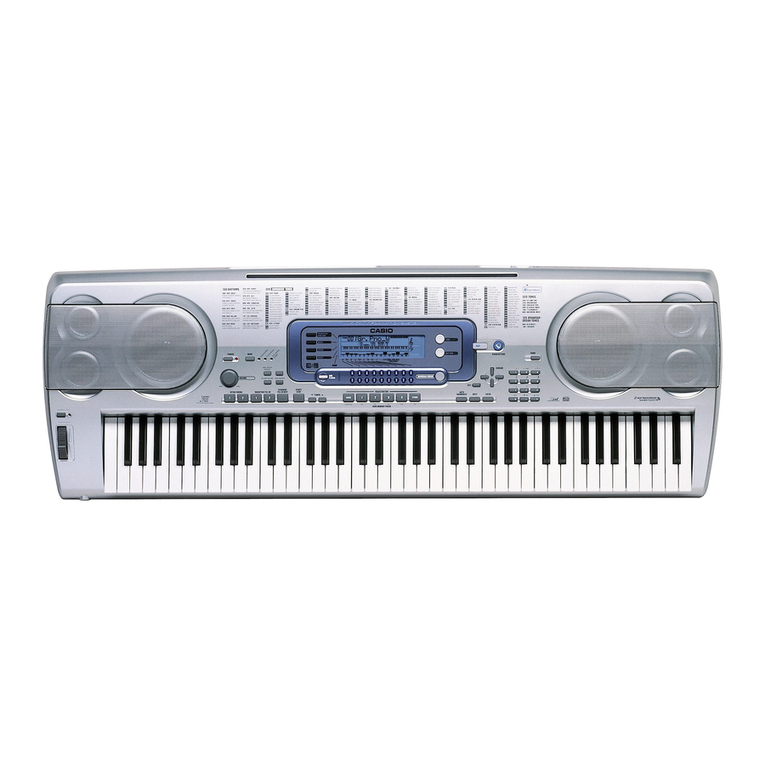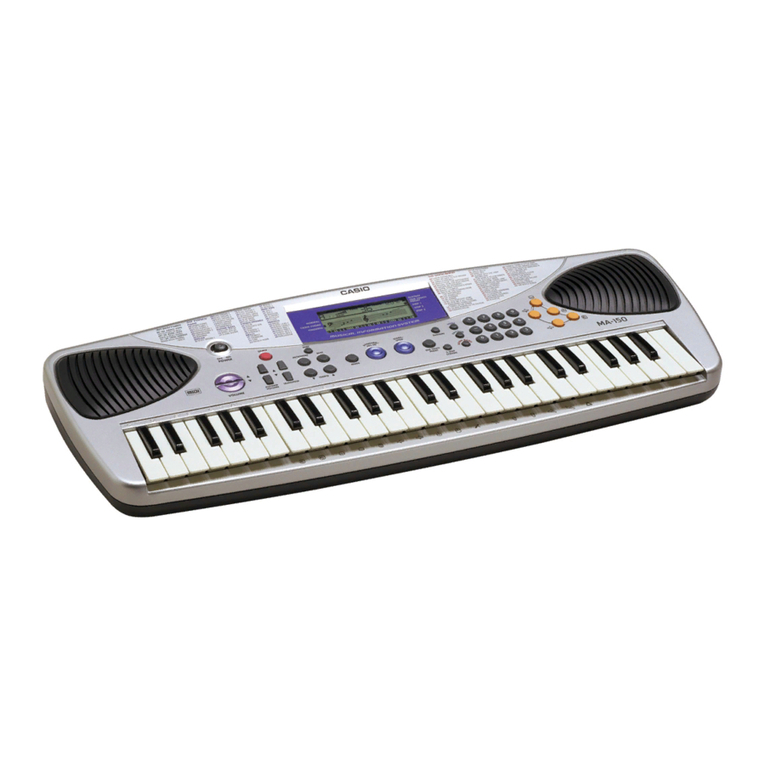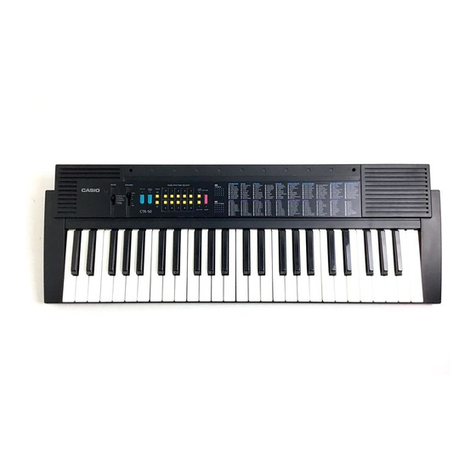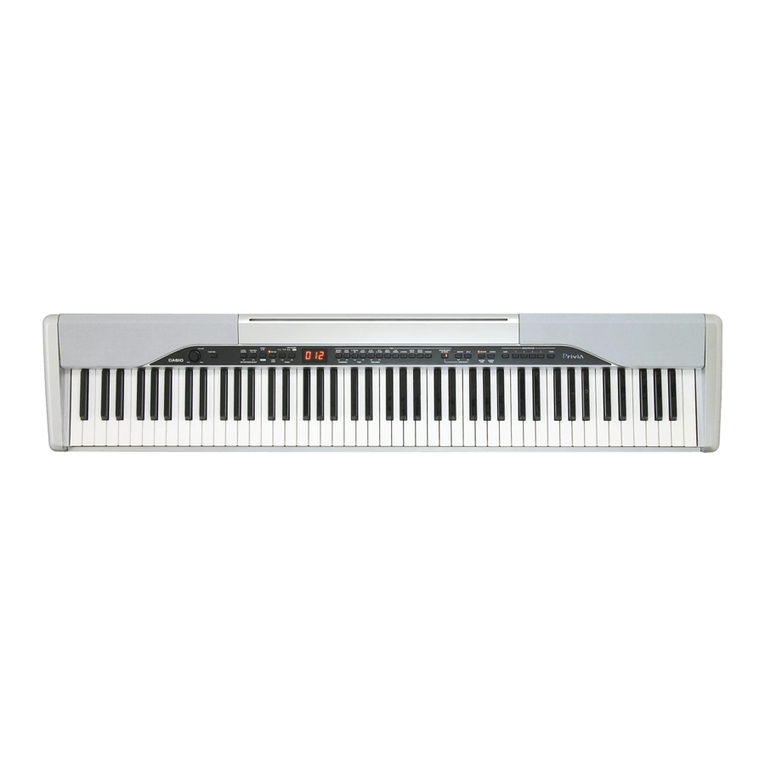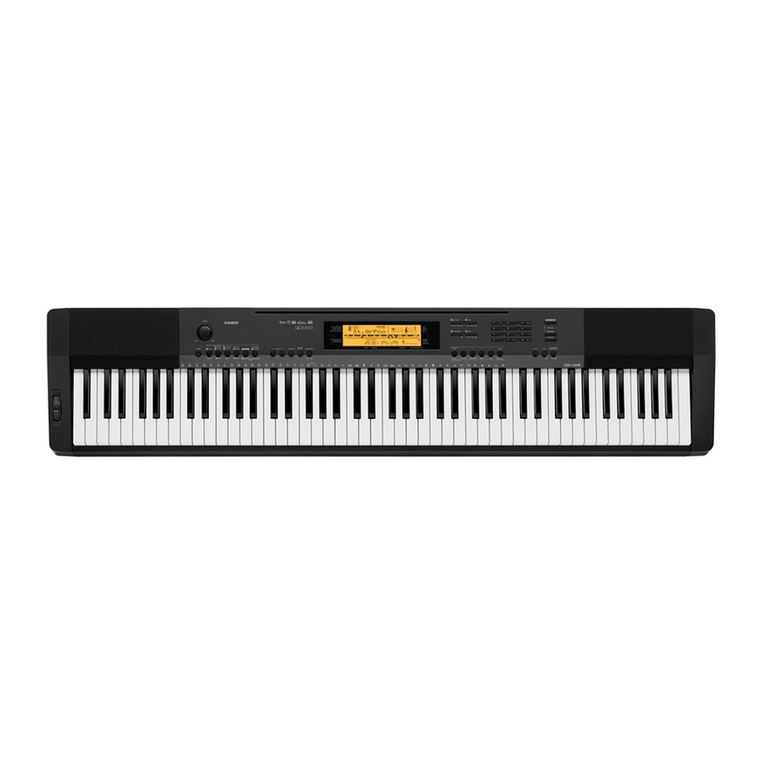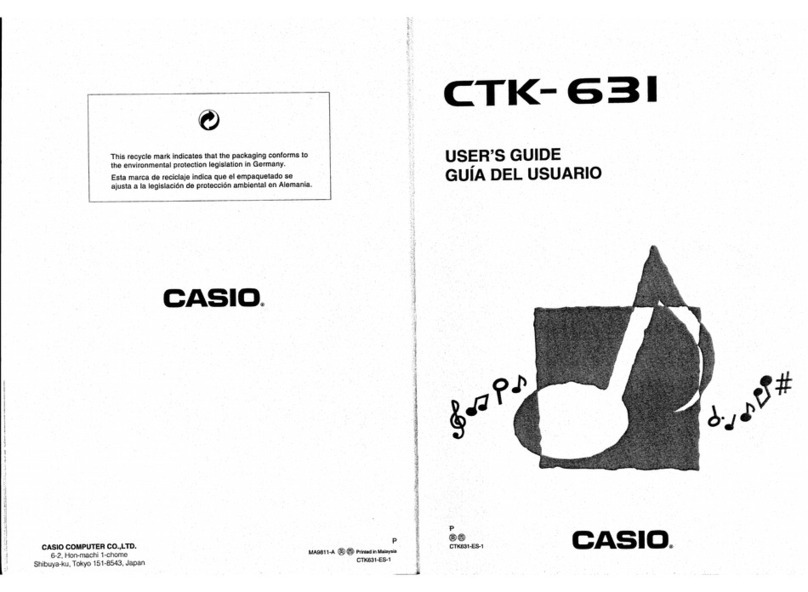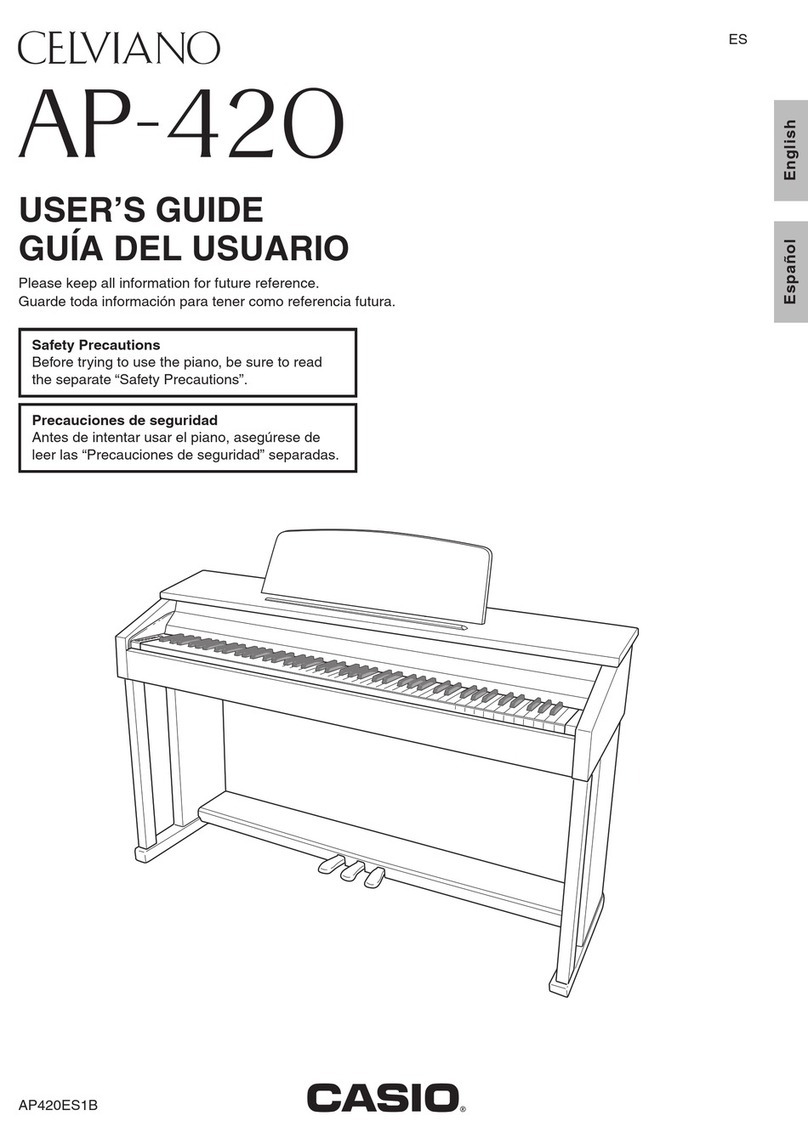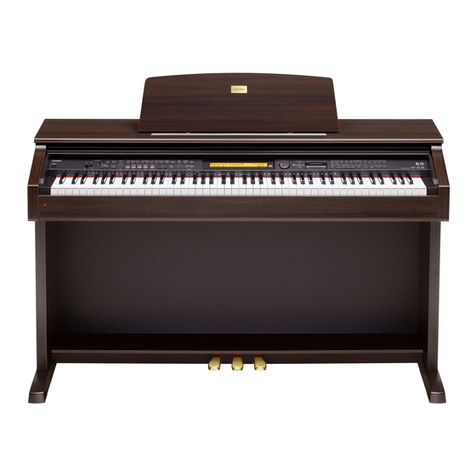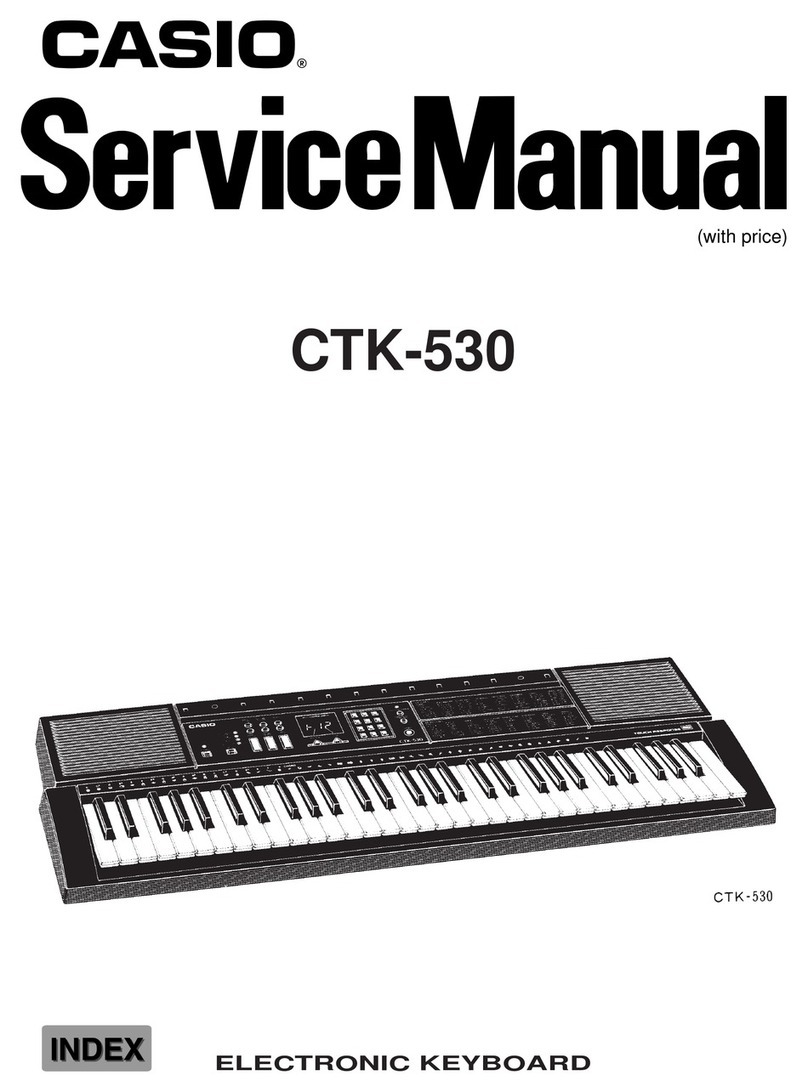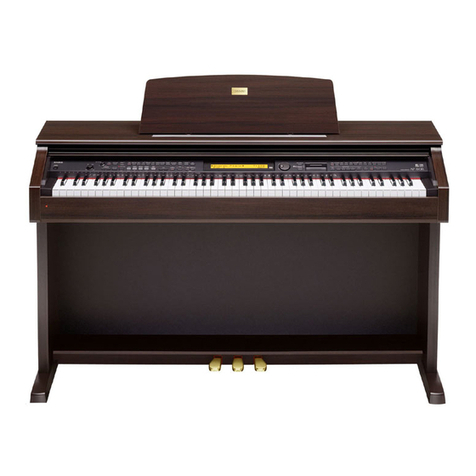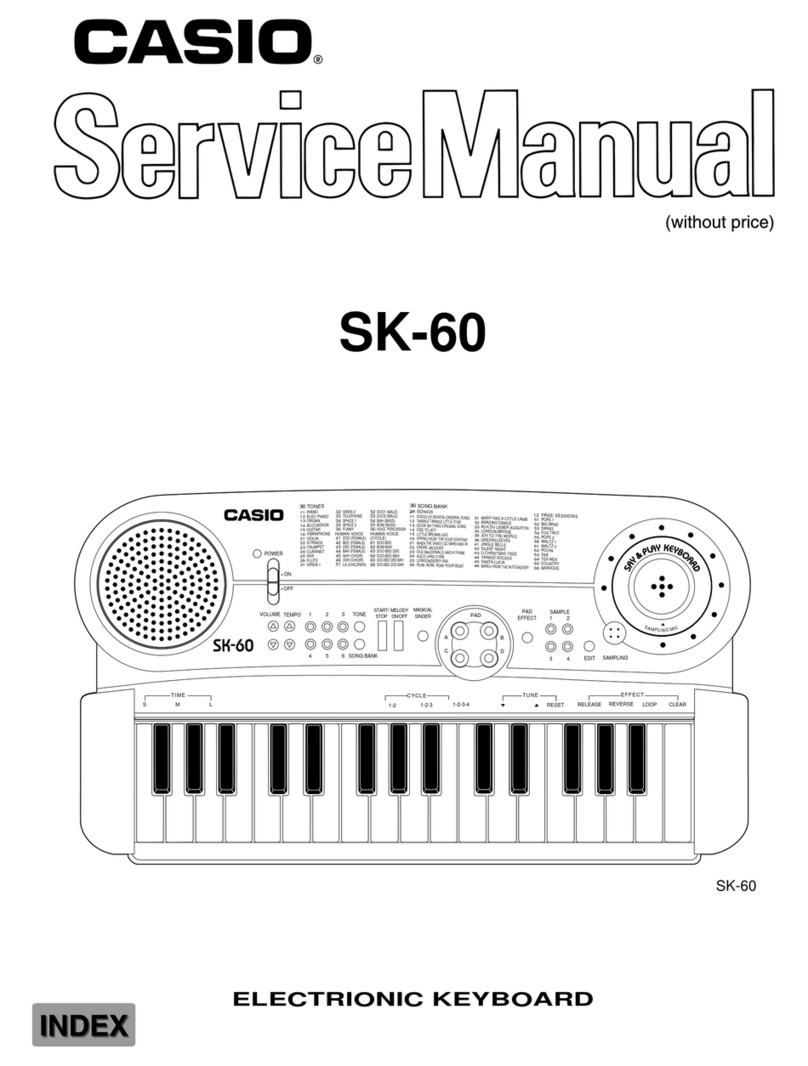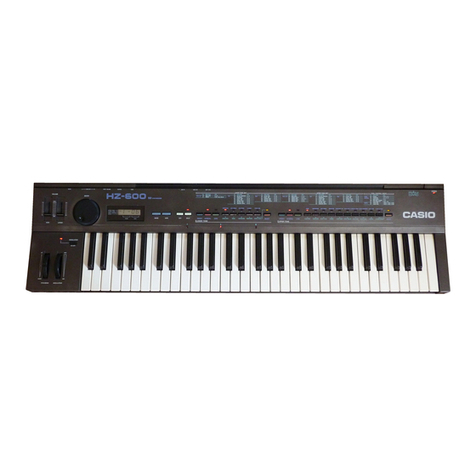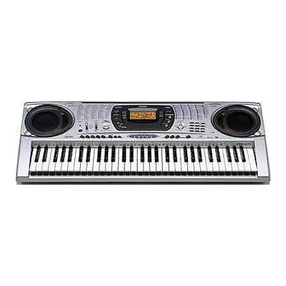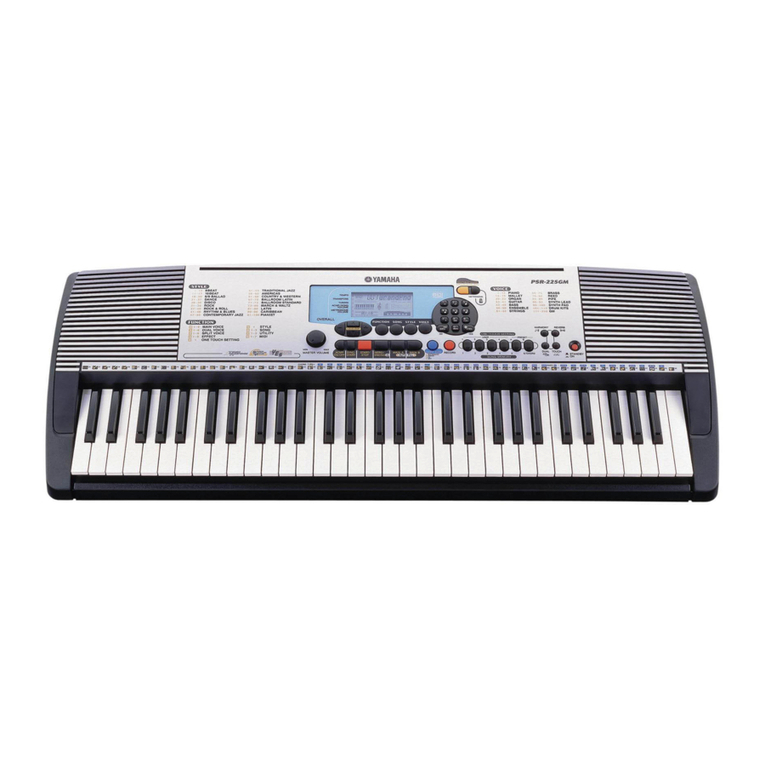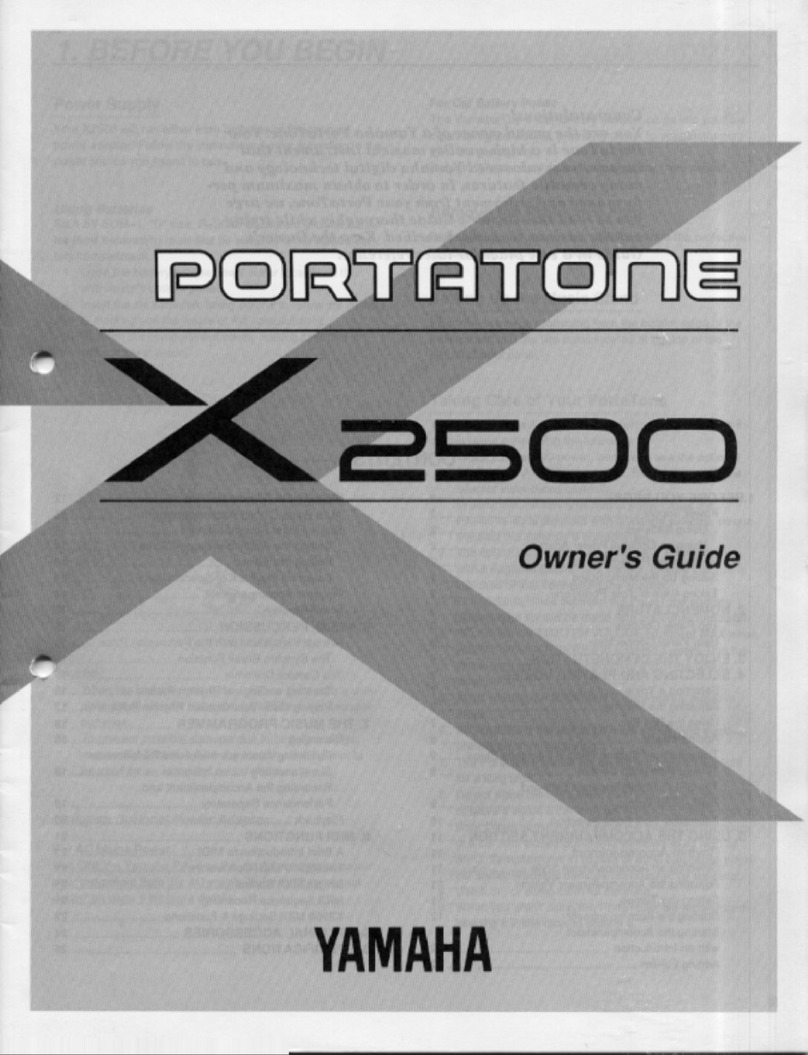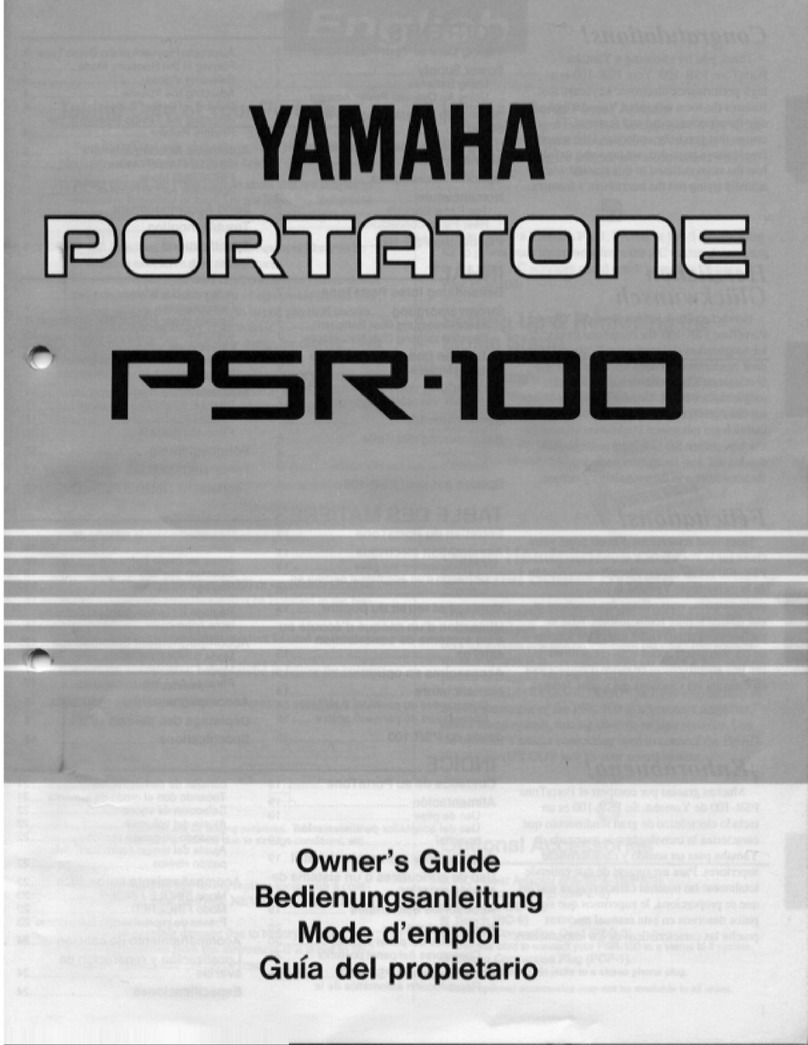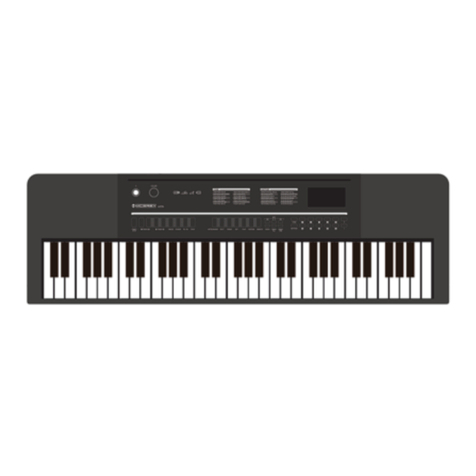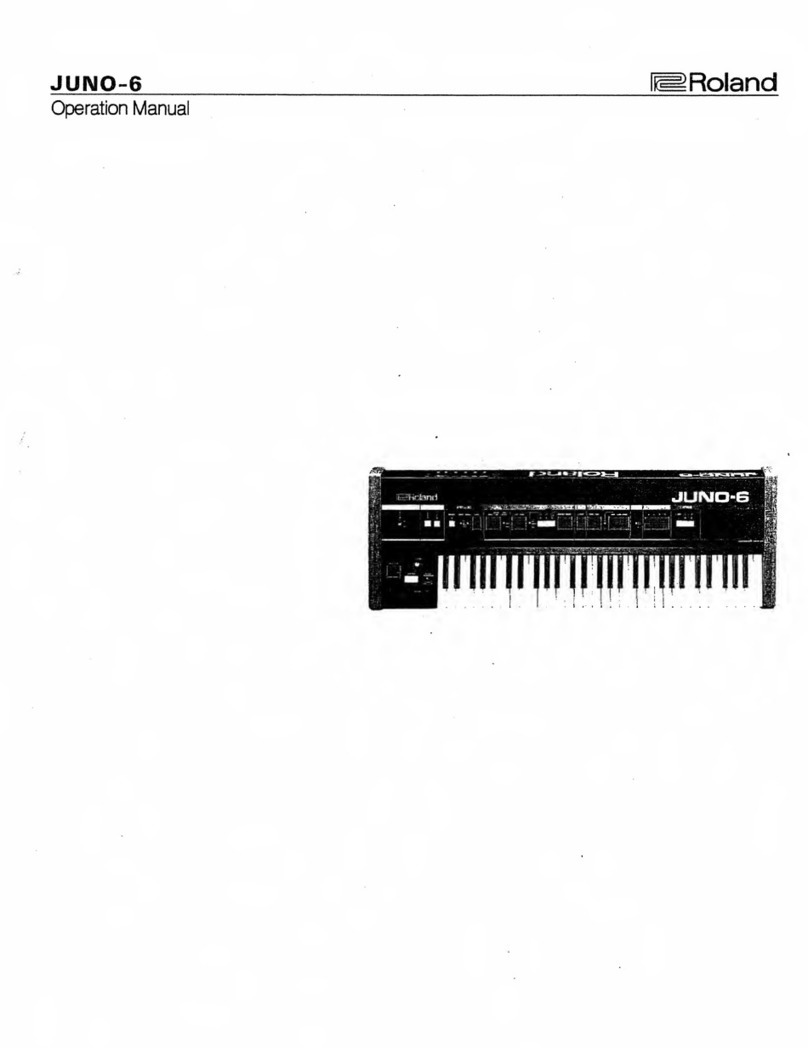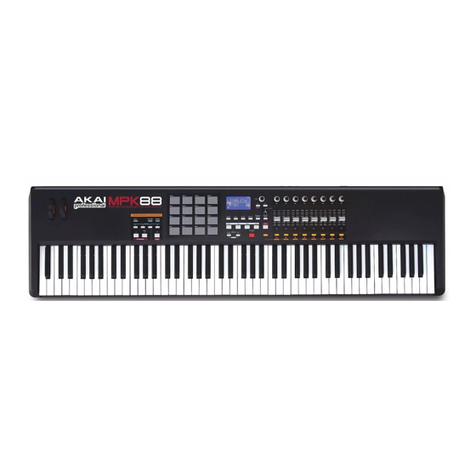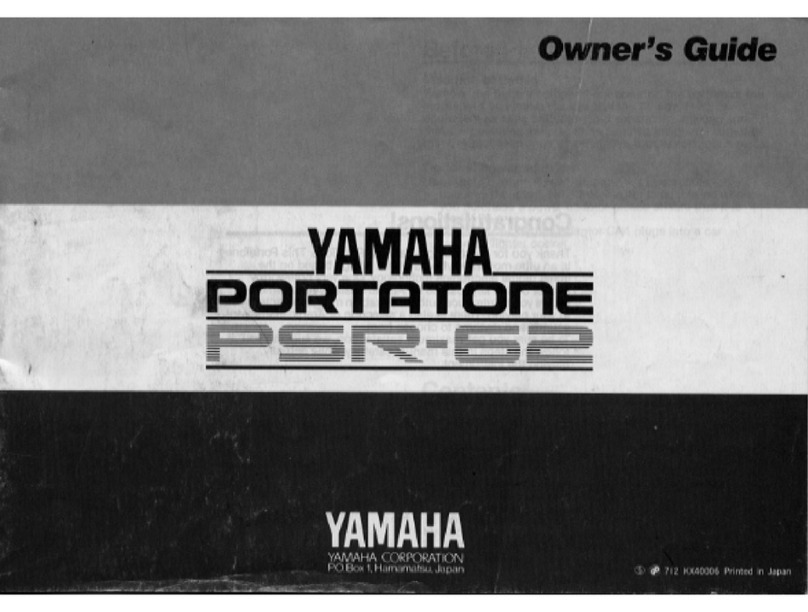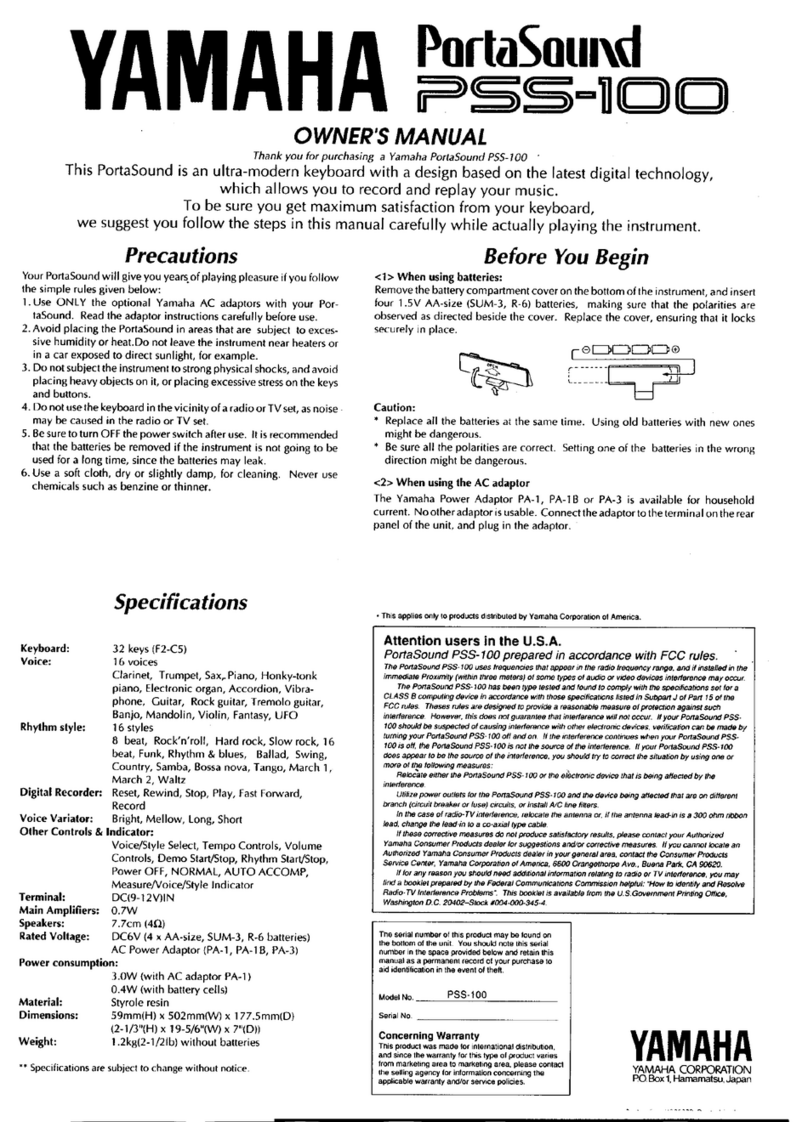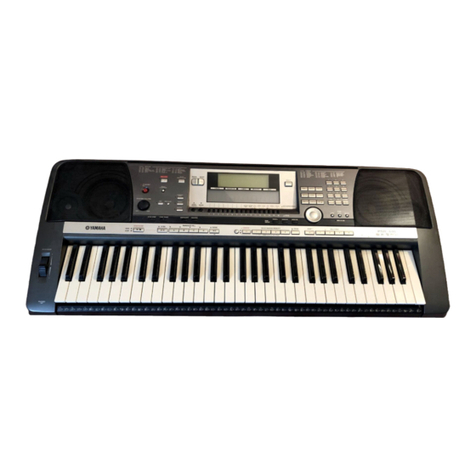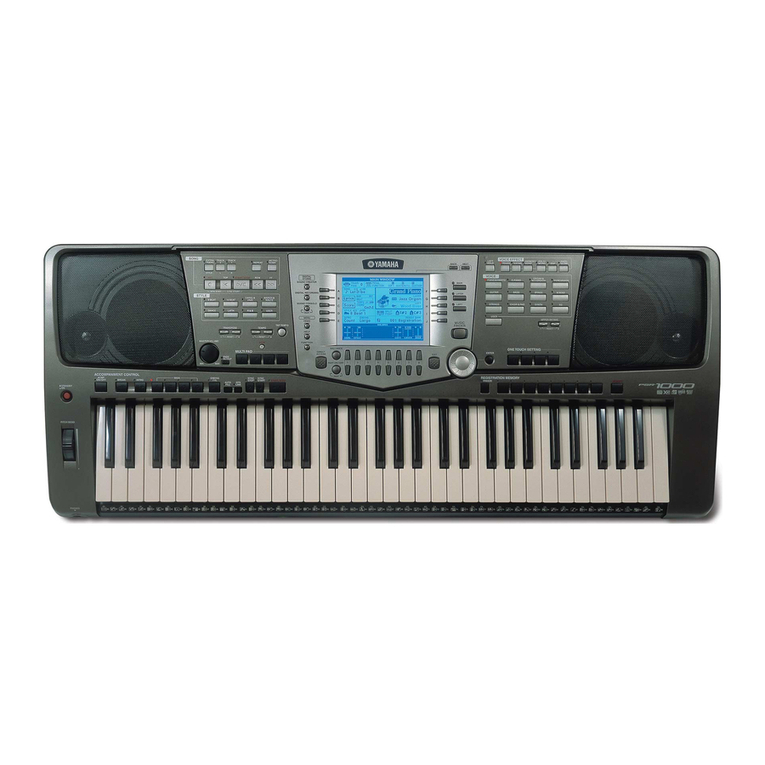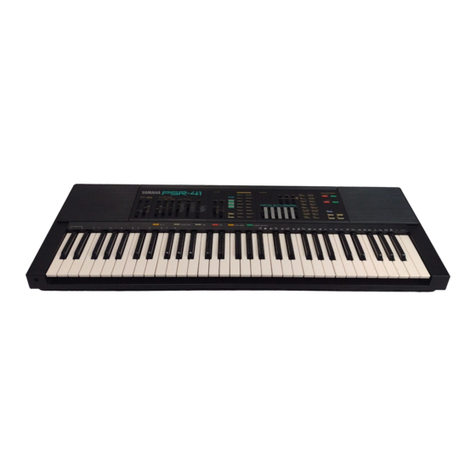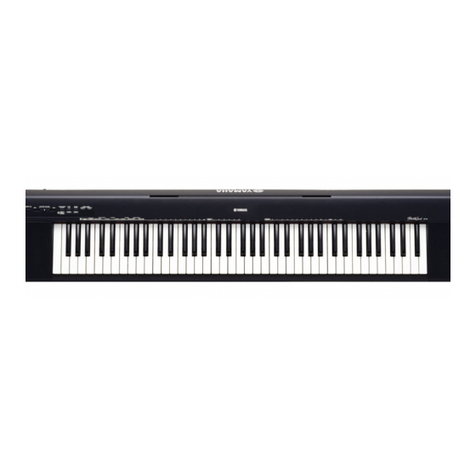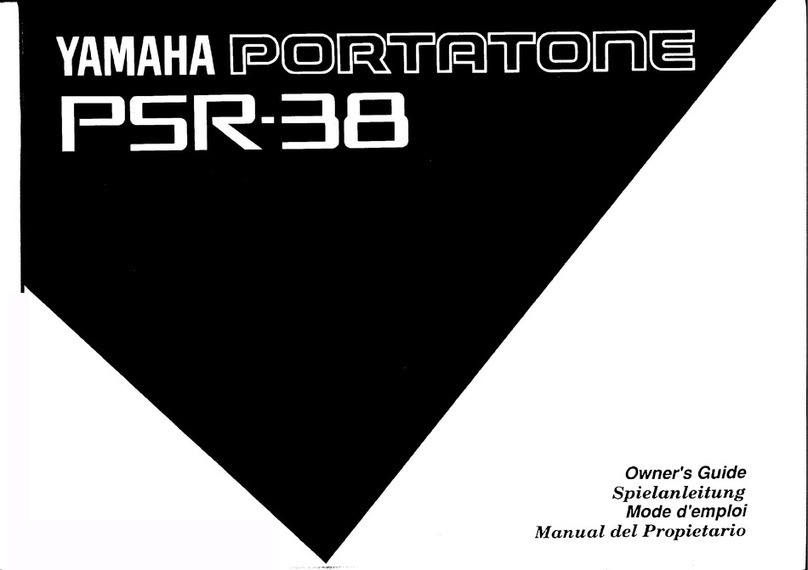
— 1 —
SPECIFICATIONS
GENERAL
Keyboard: 61 standard-size keys, 5 octaves (with touch response on/off)
Drum pads: 6
Tones: 200 (128 General MIDI, 32 synthesized, 8 drum, 32 user); with layer and
split
Rhythm instrument tones: 61
Polyphony: 24 notes maximum (12 for certain tones)
Digital effects: 3 reverb types (HALL, STAGE, ROOM)
Auto accompaniment
Rhythm patterns: 100
Tempo: Variable (216 steps, = 40 to 255)
Chords: 4 fingering methods (NORMAL, CASIO CHORD, FINGERED, FULL
RANGE CHORD)
Rhythm controller: START/STOP, INTRO, NORMAL/NORMAL FILL-IN, VARIATION/VARI-
ATION FILL-IN, SYNCHRO/ENDING
Accomp volume: 0 to 127 (128 steps)
Free session
Number of patterns: 100 (auto-accompaniment in accordance with selected chord progres-
sion)
Memory function
Songs: 2
Recording tracks: 6 (2 through 6 are melody tracks)
Recording methods: Real-time, step
Memory capacity: Approximately 5,200 notes (total for two songs)
Edit function: Equipped
Demo tunes: 2
Synthesizer function
Parameters: PCM set, amp envelope set, attack rate, release rate, pitch envelope set,
pitch, level, touch sense, pan
Mixer function
Channels: 16
Parameters: Program change number, volume, expression, pan, coarse tuning, fine
tuning, on/off/solo
MIDI: 16 multi-timbre receive, GM Level 1 standard
Other functions
Pitch bend range: 12 semitones upwards and downwards
Transpose: 25 steps (–12 semitones to +12 semitones)
Tuning: Variable (A4 = approximately 440 Hz ±50 cents)
Terminals
MIDI terminals: IN, OUT
Assignable terminal: Standard jack (sustain, sostenuto, soft, rhythm start/stop)
Headphone/Output terminal: Stereo standard jack
Output Impedance: 120 Ω
Output Voltage: 4.5 V (RMS) MAX
Power supply terminal: 9 V DC
Power supply: Dual power supply system
Batteries: 6 D-size batteries
Battery life: Approximately 5 hours continuous operation on manganese batteries
AC adaptor: AD-5
Auto power off: Turns power off approximately six minutes after last key operation. En-
abled under battery power only, can be disabled manually.
Speaker output: 2.5 W + 2.5 W
Power consumption: 9 V --- 7.7 W
Dimensions (HWD): 96.0 ×37.6 ×15.2 cm (37 13/16 ×14 13/16 ×5 15/16 inches)
Weight: Approximately 5.5 kg (12.1 lbs) (without batteries)
